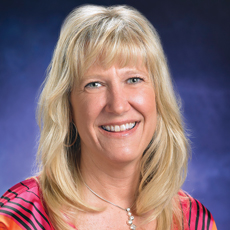
You’ve seen it happen more times than you can count: an older adult checks into the hospital with a serious illness, recovers at a rehabilitation center and is then discharged. A month later, that person is back in the hospital. Too many people end up this way, riding a roller coaster of health crises until their health is severely compromised.
Unfortunately, one in five Medicare beneficiaries return to the hospital within one month after being discharged, while one in three return within ninety days, according to a 2009 study published in the New England Journal of Medicine. To address this issue, Medicare is penalizing hospitals when patients return too quickly after discharge.
Yet, more than penalties are needed to help older adults thrive after they return home. Health care providers must look at the whole person’s needs to help people recover and live fully—and devise a comprehensive plan to meet every individual’s needs.
A new program in Minnesota called Thrive On @ Home was created by Augustana Care and Lifesprk to find a long-term solution to the issues older adults face when they leave a rehab center or hospital. Some may not be able to pick up their medications at the pharmacy if they cannot drive and have no one to help them; or if the pharmacy doesn’t deliver. Others may have nutritional needs that seem confusing and contradictory. Thrive On @ Home can help with these issues and more.
More than a care transitions initiative, the program uses consistent, personal contact with a life care navigator to identify pressing problems. Once problems are identified, the life care navigator researches possible solutions, such as adult day services or therapy. Those who participate in the program receive a variety of services:
- Free phone support
- Educational tips
- Connections to resources
- Follow-up calls and visits made periodically after discharge to discover people’s ongoing needs and connect them to services/resources when needed
- Check in calls every six months after program participants are discharged
- A quarterly newsletter and e-mail tips are also sent to participants
Thrive On @ Home uses the expertise of both partners (Augustana Care and Lifesprk) in providing care to older adults, recognizing that they have unique needs that need to be addressed so they can continue to live their lives with passion and spark. That can also mean providing support that is not medical to help people enjoy life more. For example, one gentleman in the program requested help with setting up volunteer opportunities to share his story about flying in World War II — and our life care navigator researched area museums to assist him.
One of the most important takeaways we have found with this program is that, while rehospitalizations occur with all too much frequency, they are, in fact, preventable. Support and services are crucial in preventing recurrent crises after people leave rehabilitation. Benefits to older generations and families extend far beyond immediate health care issues and concerns. By helping people be successful at home, the program helps them maintain their independence, stay in control and save money that might otherwise be spent on acute care crises or long-term care.
If your goal as a healthcare provider is to reduce the number of rehospitalizations people experience, you’ll need to find out more about individuals’ lifestyles and needs once they return home. The key is not only in the care they receive while recovering—but in how well we follow up with them once they are discharged.
Life Care Navigator Lyn Lais is a registered nurse with more than 24 years of healthcare experience. She prides herself on delivering a different experience that focuses on the individual, helping them build a path to their goals. Learn more about the Thrive On @ Home program at www.augustanacare.org and see the story on preventing rehospitalizations in our “News” section.



